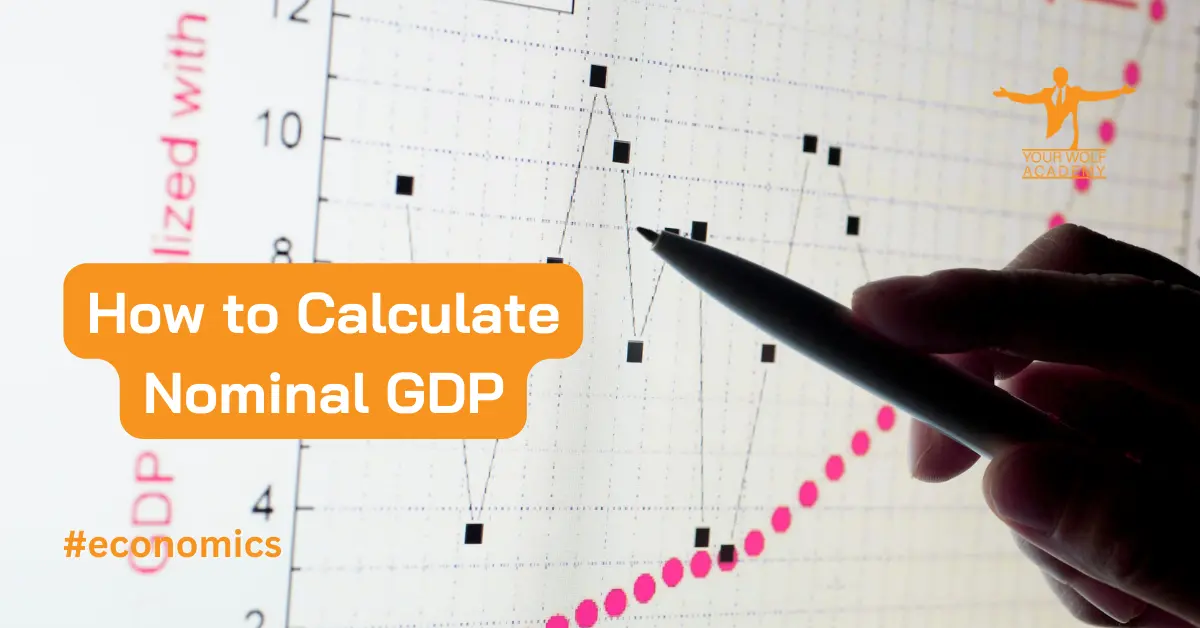Nominal GDP is one of the most widely used economic indicators to measure the size and health of a country’s economy. It represents the total monetary value of all goods and services produced within a country’s borders during a specific period, usually a year.
Nominal GDP is important because it allows policymakers, investors, and businesses to evaluate the performance of an economy, make informed decisions, and compare economic performance across countries and over time. In this article, we will explain how to calculate nominal GDP, including its formula, components, and examples.
What is Nominal GDP?
Nominal GDP is the total value of all final goods and services produced within a country’s borders during a specific period, usually a year. The term “nominal” means that the GDP is not adjusted for inflation, which means that it reflects both changes in the quantity of goods and services produced and changes in their prices. Nominal GDP is calculated using the following formula:
Nominal GDP = P1 × Q1 + P2 × Q2 + … + Pn × Qn
Where: P = price of a good or service Q = quantity of a good or service n = the number of goods and services produced
Components of Nominal GDP
Nominal GDP consists of several components that reflect different aspects of an economy. These components include:
- Personal Consumption Expenditures (C): This component represents the total spending by households on goods and services, including durable goods (e.g., cars and appliances), nondurable goods (e.g., food and clothing), and services (e.g., healthcare and education).
- Gross Private Domestic Investment (I): This component represents the total spending by businesses on capital goods (e.g., buildings and equipment) and inventories.
- Government Consumption Expenditures and Gross Investment (G): This component represents the total spending by the government on goods and services, including salaries and wages of government employees, infrastructure investments, and purchases of goods and services.
- Net Exports (NX): This component represents the difference between a country’s exports and imports of goods and services.
Calculating Nominal GDP
To calculate nominal GDP, we need to follow these steps:
Step 1: Identify the Components of Nominal GDP
The first step in calculating nominal GDP is to identify the components that make up the GDP. These components include personal consumption expenditures (C), gross private domestic investment (I), government consumption expenditures and gross investment (G), and net exports (NX).
Step 2: Collect Data on the Components
The second step is to collect data on the various components of GDP. This data can be obtained from national accounts, surveys, and other statistical sources.
Step 3: Calculate the Value of Each Component
The third step is to calculate the value of each component of GDP. This is done by multiplying the quantity of each good or service produced by its respective price.
Step 4: Add up the Values of All Components
The fourth step is to add up the values of all the components of GDP to arrive at the nominal GDP for the given period.
Real-Life Examples
Let’s take a look at some real-life examples to understand how nominal GDP is calculated.
Example 1:
Suppose a country produces three goods: 10 cars at a price of $20,000 each, 5 refrigerators at a price of $1,000 each, and 100 haircuts at a price of $50 each. The nominal GDP for this country would be calculated as follows:
Nominal GDP = (10 cars x $20,000) + (5 refrigerators x $1,000) + (100 haircuts x $50) Nominal GDP = $200,000 + $5,000 + $5,000 Nominal GDP = $210,000
In this example, the nominal GDP of the country is $210,000, which represents the total value of all final goods and services produced in the country.
Example 2:
Suppose a country’s GDP is made up of the following components:
Personal Consumption Expenditures (C) = $5 trillion Gross Private Domestic Investment (I) = $1 trillion Government Consumption Expenditures and Gross Investment (G) = $2 trillion Net Exports (NX) = $500 billion
To calculate the nominal GDP for this country, we would use the formula:
Nominal GDP = C + I + G + NX Nominal GDP = $5 trillion + $1 trillion + $2 trillion + $500 billion Nominal GDP = $8.5 trillion
In this example, the nominal GDP of the country is $8.5 trillion, which represents the total value of all final goods and services produced in the country.
Conclusion
In summary, nominal GDP is an important economic indicator that measures the total value of all final goods and services produced within a country’s borders during a specific period.
Calculating nominal GDP requires identifying the components of GDP, collecting data on these components, calculating the value of each component, and adding up the values of all components.
By understanding nominal GDP, policymakers, investors, and businesses can make informed decisions about the economy and its future prospects.
Your Wolf Academy offers a range of educational resources to help traders succeed, including free signals, technical analysis, and weekly webinars. Sign up today and get a recommendation for a regulated brokerage company that suits your needs.


